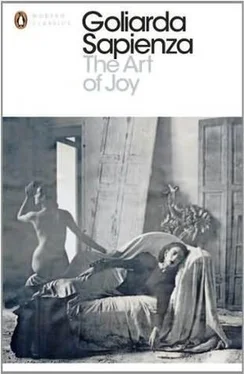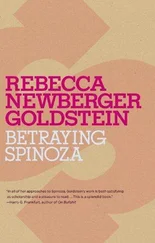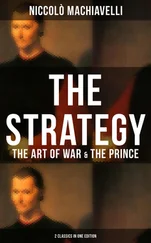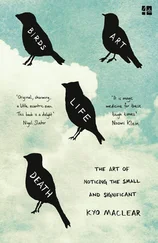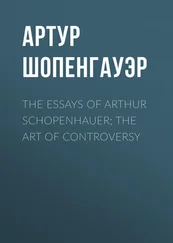73. Orlando (Roland) was Charlemagne’s paladin and Durendal was the name of his sword; the reference is to Ludovico Ariosto’s Orlando Furioso . The puppets are the large marionettes of the Opera dei Pupi, the Sicilian Puppet Theatre, a traditional form of entertainment on the island; the marionettes are a representative symbol of Sicilian folk-art and as integral to Sicily’s cultural identity as painted horse carts and cannoli .
74. The Belle Otéros refer to Caroline Otéro, who gained fame in the theatres of Europe and became known as La Belle Otéro. Her career as an actress, singer, dancer and courtesan took her around the world, and she was said by the press to be the lover of no fewer than six crowned heads of state; at least two men supposedly fought a duel over her, and another committed suicide when she rejected his advances.
75. Resurrection , first published in 1899, was Leo Tolstoy’s last novel, intended to be an exposition of the injustice of man-made laws and the hypocrisy of the institutionalized church.
76. The term ‘unavoidable destiny’, which Modesta says would be a great title for a novel, became the title of a posthumous volume of stories by Sapienza: Destino coatto (Empiria, 2002; Einaudi, 2011).
77. The Shakespeare reference to stopping time and children may recall Sonnet 3: ‘Thou art thy mother’s glass and she in thee / Calls back the lovely April of her prime…’ The heartless or ‘black’ Dark Lady figures in twenty-four of Shakespeare’s sonnets, addressed to a woman whom the poet describes as ‘a woman colour’d ill’, with black eyes and coarse black hair. From the poet’s perspective, he is treated badly by her; in sonnet 114, for example, he describes this temptress as ‘my female evil’ and ‘my bad angel’, who ultimately causes him anguish. The Dark Lady Sonnets are also referred to as The Bard’s Black Beauties: — e.g.: ‘In the old age black was not counted fair, / Or if it were, it bore not beauty’s name. / But now is black beauty’s successive heir, / And beauty slandered with a bastard shame’ (Sonnet 127).
78. The line ‘O Sun, that rises from shit’ is a twist on the words of the Fascist ‘Hymn to Rome’: ‘ Sole, che sorgi libero e giocondo …’, ‘O Sun, that rises free and joyful’.
79. The ‘bundled rods’, or verghe del fascio , refer to the Fascist symbol: a bundle of rods bound together around an axe with the blade projecting. It was based on the ancient Roman fasces which the magistrates carried as an emblem of authority and which consisted of a bundle of birch rods.
80. The remaining ‘Liberals’ who asked to be called Ardito , brave or daring, on their Party card were holdovers from the Italian Liberal Party. When the Liberal Party’s government could not control the debt, unemployment, strikes and other forms of social discontent in Italy at the time, including anarchist, socialist and communist insurrections, the Fascist Revolutionary Party led by Mussolini took matters in hand and combatted those issues with the Black Shirts, paramilitary squads of veterans from the First World War and ex-socialists.
81. L’Avventuroso was a periodical in comic strip format, based on American adventure comics.
82. Using the term ‘defeatist’ is criticized because disfattista , like ‘ me ne frega ’, ‘I don’t give a damn’, was one of many Fascist slogans. It refers to the defeatist attitude of the revolutionaries who did not succeed in bringing about the revolution.
83. Page Fernando appears in a short story by Giovanni Verga, ‘Paggio Fernando’.
84. The suggestion of applying Freud’s theories to Freud himself, as Freud did with Michelangelo, alludes to Freud’s 1914 essay on Michelangelo’s statue of Moses. The essay is the only one of Freud’s works whose authorship he sought to conceal, until he agreed to have it included in his Gesammelte Schriften in 1924. Although the essay bears no relation to psychoanalytic theory as such, Freud characterized the method of inquiry that he employed therein as one that has ‘in point of fact a certain resemblance to the methodology of psychoanalysis’, and a number of authors have since proclaimed the essay to be paradigmatic of Freudian interpretive methods. Freud’s stated purpose was to discover Michelangelo’s intention in creating the statue: what was the mental constellation or emotional attitude that the artist had aimed to awaken in the viewer? Answering that question required finding the meaning and content of Michelangelo’s representation, that is, interpreting it. See Malcolm Macmillan and Peter J. Swales, ‘Observations from the Refuse-Heap: Freud, Michelangelo’s Moses, and Psychoanalysis’, American Imago , vol. 60, no. 1, 41–104, copyright © 2003 by The Johns Hopkins University Press.
85. The Castrogiovanni that towers among the clouds is Castrugiuvanni, or Enna (Latin: Henna or Haenna), a city and commune located roughly at the centre of Sicily. Soaring above the surrounding countryside, it has been given the nicknames belvedere (panoramic viewpoint) and ombelico (navel) of Sicily. After the Islamic conquest of Sicily, the name for the city became Qas’r Ianni (Fort of John), a combination of qas’r (a corruption of the Latin castrum , fort), and Ianni (a corruption of Henna). In Sicilian dialect the name remained Castro Janni (Castrogiovanni) until it was renamed by order of Benito Mussolini in 1927.
86. La vida es sueño, Life is a Dream , is a Spanish play by Pedro Calderón de la Barca, dating from 1635.
87. In Maternal Transference, a person who has had a difficult relationship with his or her mother during childhood may come to regard someone else as a mother figure. In the eyes of that person, the mother figure assumes wisdom and authority, providing reassurance that all will be well. The mother figure feels good as a result of this, since the childlike respect and admiration she gains boost her self-esteem, and give her power. In her position of authority, she provides protection and control in return for loyalty and obedience.
88. The International Brigades were military units made up of socialist, communist and anarchist volunteers from different countries, who travelled to Spain to defend the Second Spanish Republic in the Spanish Civil War between 1936 and 1939.
89. The Littoriali were a type of Fascist youth competition held in different cities.
90. The ritual known as the Mensur was a fencing match considered a rite of passage for German students who were members of university fraternal organizations ( Verbindungen , also Burschenschaften , or Corps). Before the Second World War, the vast majority of German students belonged to such organizations, which after the war were banned by the Allies until 1956. The facial scars inflicted during the Mensur were often considered to be a badge of honour, and the Mensur has been classified as a subcategory of Ritualistic Combat.
91. Artemis Toxotis is one of the oldest known and most widely worshipped of the Greek goddesses; of the many epithets associated with her, toxotis , the archer, was one of them.
92. The monete siceliote , the many Greco-Sicilian coins Timur has studied as an archaeologist, are coins dating back to the time of the Greek colonies on the island of Sicily. The noun and adjective siceliòta (from the Greek Σμϰελιω′της) was a denomination used by Greeks in the homeland to designate their fellow countrymen who settled in the numerous colonies founded in Sicily in the 8th century BC.
93. Giovanni Grasso is considered Sicily’s greatest tragic actor and one of Italy’s best.
Читать дальше
